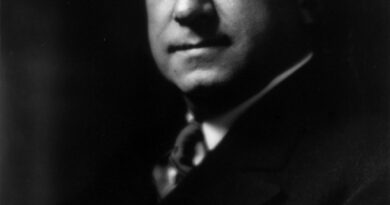Legends – J.P. Morgan’s Life Story
John Pierpont Morgan (1837-1913) was a prominent American financier and banker who played a central role in the development of the American economy in the late 19th and early 20th centuries. Born in Hartford, Connecticut, Morgan began his career in finance as a clerk at a banking firm in London. He later returned to the United States, where he established J.P. Morgan & Co. and became one of the most influential bankers of his time.
Morgan was known for his involvement in several major business transactions and mergers, including the creation of several large corporations, such as U.S. Steel, General Electric, and International Harvester. He was also instrumental in organizing and financing large-scale industrial and infrastructure projects, including the construction of the first transcontinental railroad.
In addition to his business acumen, Morgan was also known for his philanthropy. He made significant donations to a variety of causes, including education, the arts, and medical research. He was a major benefactor of several universities, including Harvard, Yale, and Princeton, and was also a strong supporter of the Metropolitan Museum of Art in New York City.
During his career, Morgan was the subject of several investigations and lawsuits, including an antitrust suit brought against him by the U.S. government. Despite these controversies, he was widely regarded as one of the most important figures in American finance and banking, and his legacy continues to be felt today.
In the years following Morgan’s death, his banking firm continued to play a central role in American finance, and it eventually merged with several other banking institutions to become JPMorgan Chase, one of the largest financial institutions in the world.
Some Interesting facts about J.P.Morgan
- Art Collector: Morgan was a passionate art collector and was known to have one of the largest and most impressive collections of European art in the United States.
- Book Collection: In addition to his art collection, Morgan also had a large collection of rare books and manuscripts, which he housed in a private library.
- Philanthropy: Morgan was a major philanthropist and made significant donations to a variety of causes, including education, the arts, and medical research.
- Philanthropy in England: In addition to his philanthropy in the United States, Morgan was also a benefactor in England, where he made donations to several British institutions, including the National Gallery and the British Museum.
- Personal Interests: In addition to his business and philanthropic interests, Morgan was also known to have a passion for yachting and was the owner of several yachts during his lifetime.
- Yacht Accident: In 1905, Morgan was involved in a serious yacht accident off the coast of Scotland, which resulted in several fatalities and led to a public outcry about the dangers of leisure sailing.
- Bank Panics: Morgan played a key role in resolving several bank panics in the late 19th and early 20th centuries, including the Panic of 1907, in which he helped to organize a consortium of banks to provide financing to prevent a major financial crisis.
- Trustbuster: Despite his reputation as a monopolist, Morgan was also known to have helped break up several trusts and monopolies, including the Northern Securities Company.
- Controversies: Despite his successes and philanthropy, Morgan was also the subject of several controversies, including antitrust lawsuits brought against him by the U.S. government.
- Legacy: Despite the controversies, Morgan’s legacy continues to be felt today, and he remains one of the most influential figures in American finance and banking. His contributions to American business and society are widely recognized as among the greatest of his time, and his impact on the development of American finance and banking continues to be studied and debated by scholars and experts.






